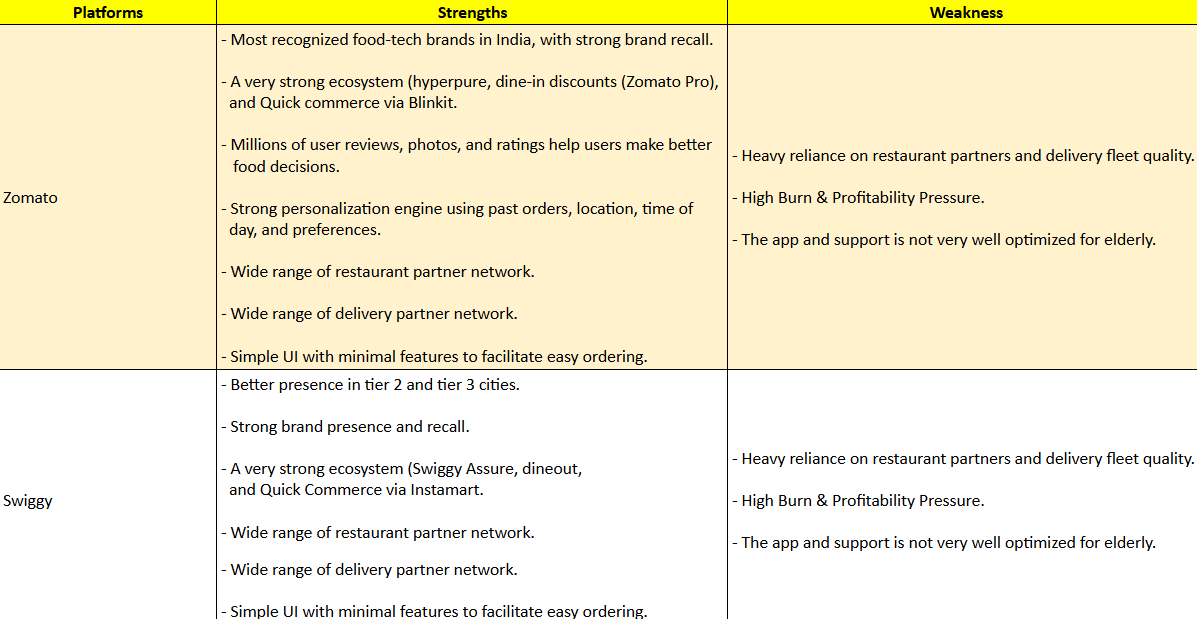Product deconstruction involves analyzing and breaking down a product to uncover its capabilities. This involves identifying its target user segments, their needs, and how it solves user problems and delivers value. This process often reveals competitive advantages or market gaps.
Regular product deconstruction trains PMs to think critically, build intuition, and bridge gaps between user needs and business goals, the essence of great product management.
Below is one of the structured approaches one may use to deconstruct a product.
The example taken is Zomato, a leading Indian food delivery and restaurant discovery platform that connects users with local eateries through online ordering, reviews, and real-time tracking.
Step 1 - Define the user segments, their needs or use cases, and how the product solves them.
Step 2 - Break down the top 3 features, the problem solved, and why it works.
Step 3 - Do competitive analysis.
Step 4 - Identify the Opportunities or Suggested Improvements.
Simplify App UX for Elderly - It’s an underserved but growing segment which can drive inclusivity and loyalty.
Launch a Student Subscription Plan - Students seek affordability. Custom discounts can build early loyalty and volume.
Better Blinkit-Zomato Integration - Cross-selling groceries with meals can increase user convinience and help company manage delivery cost better.





